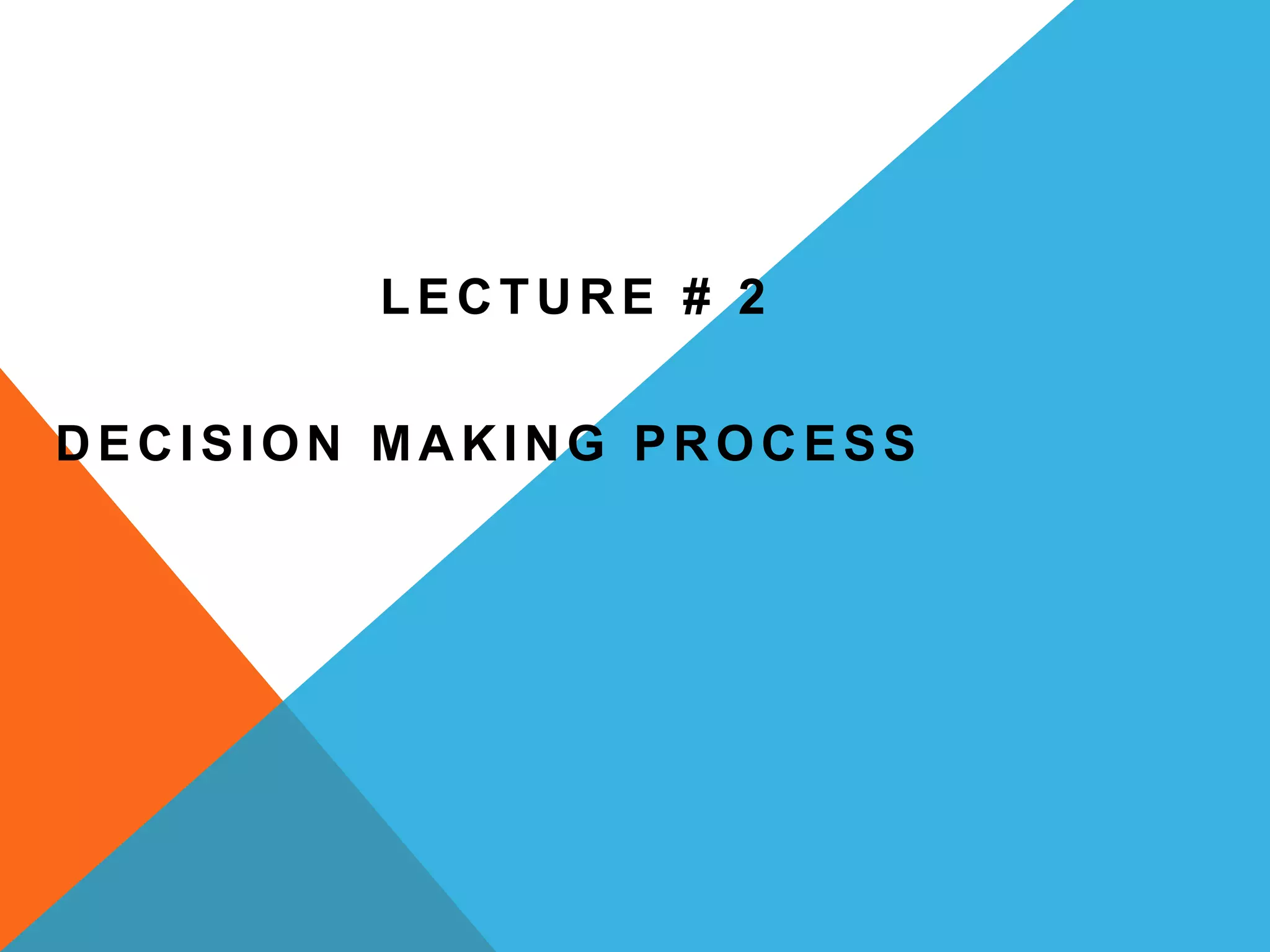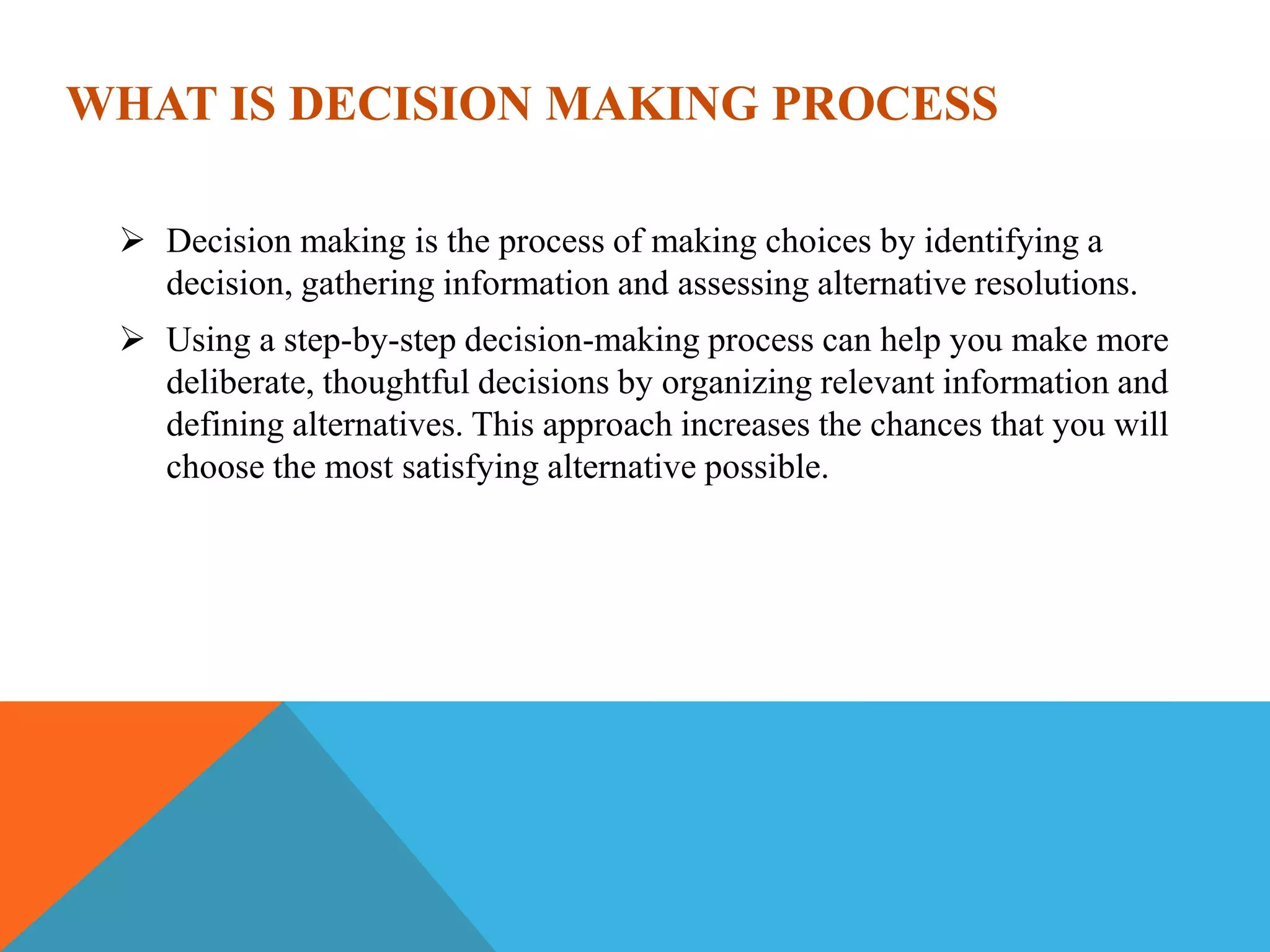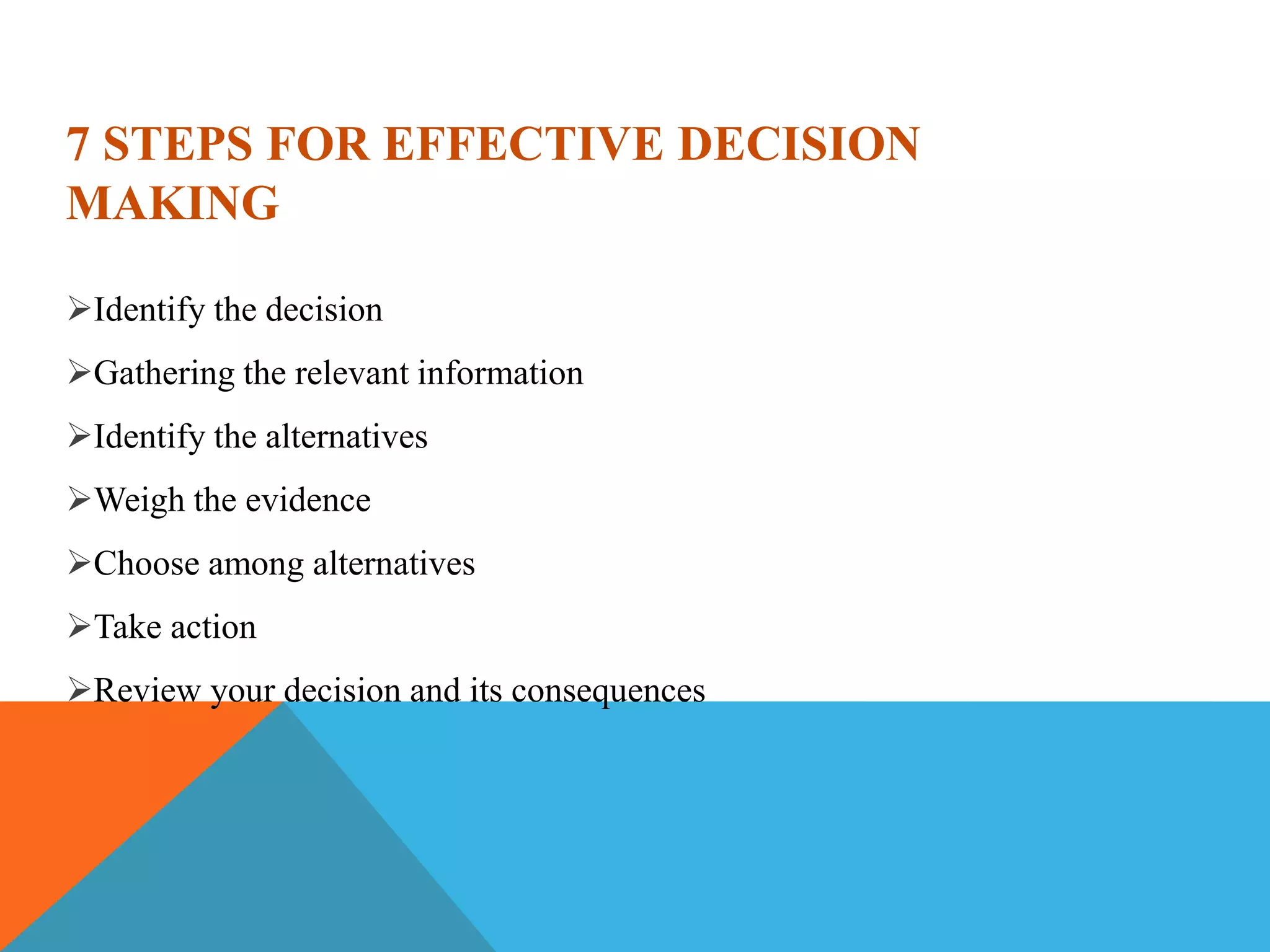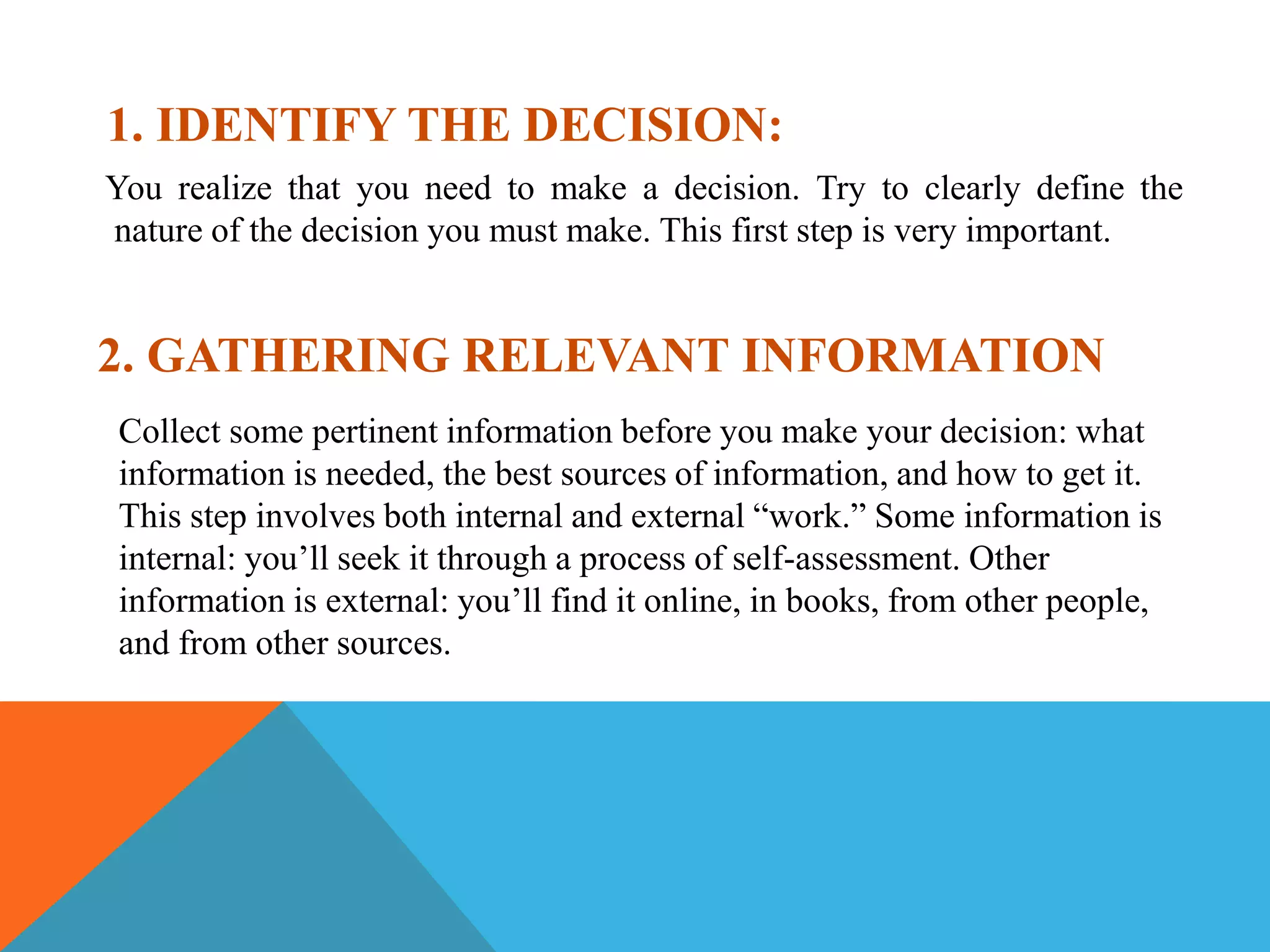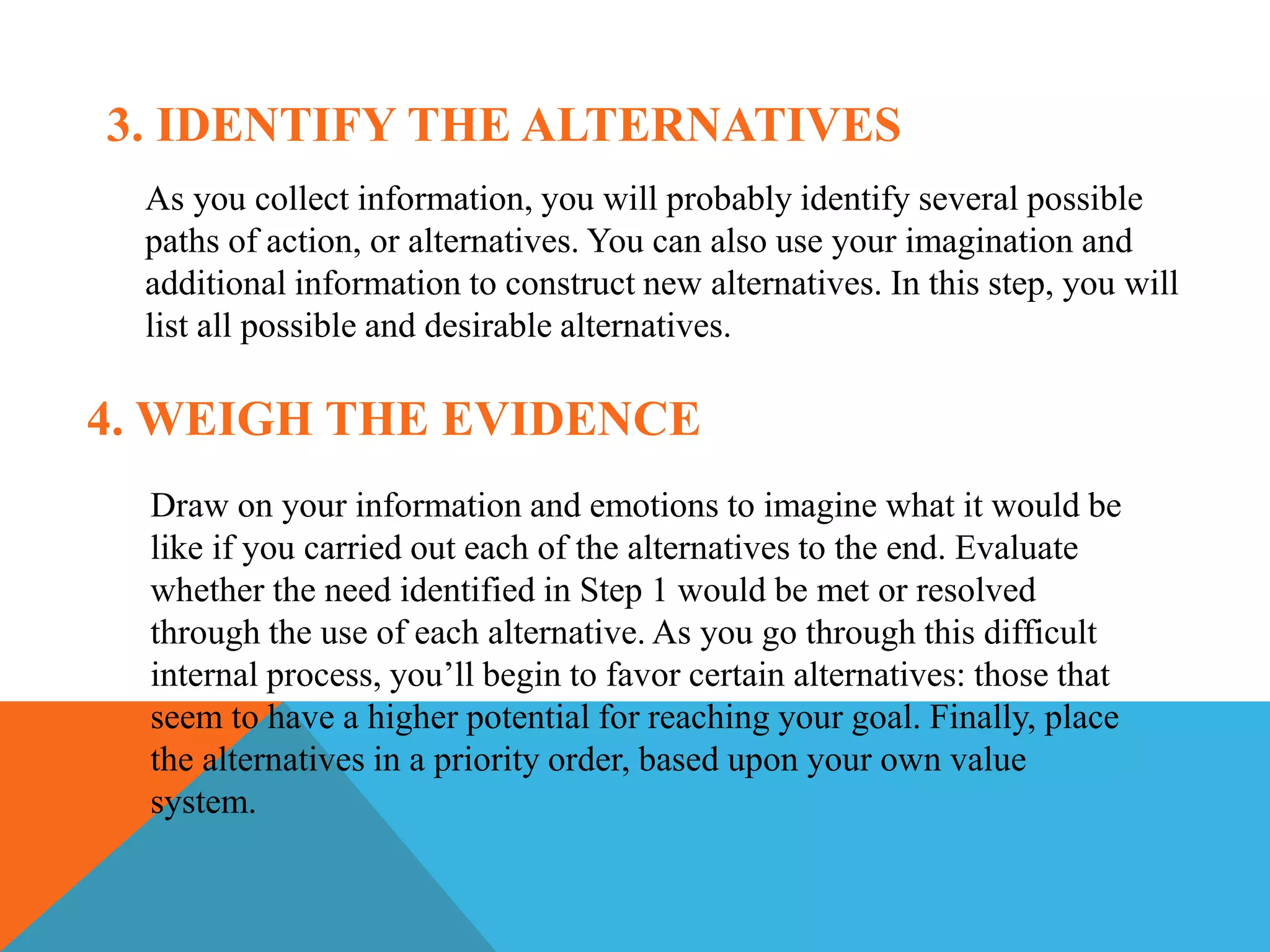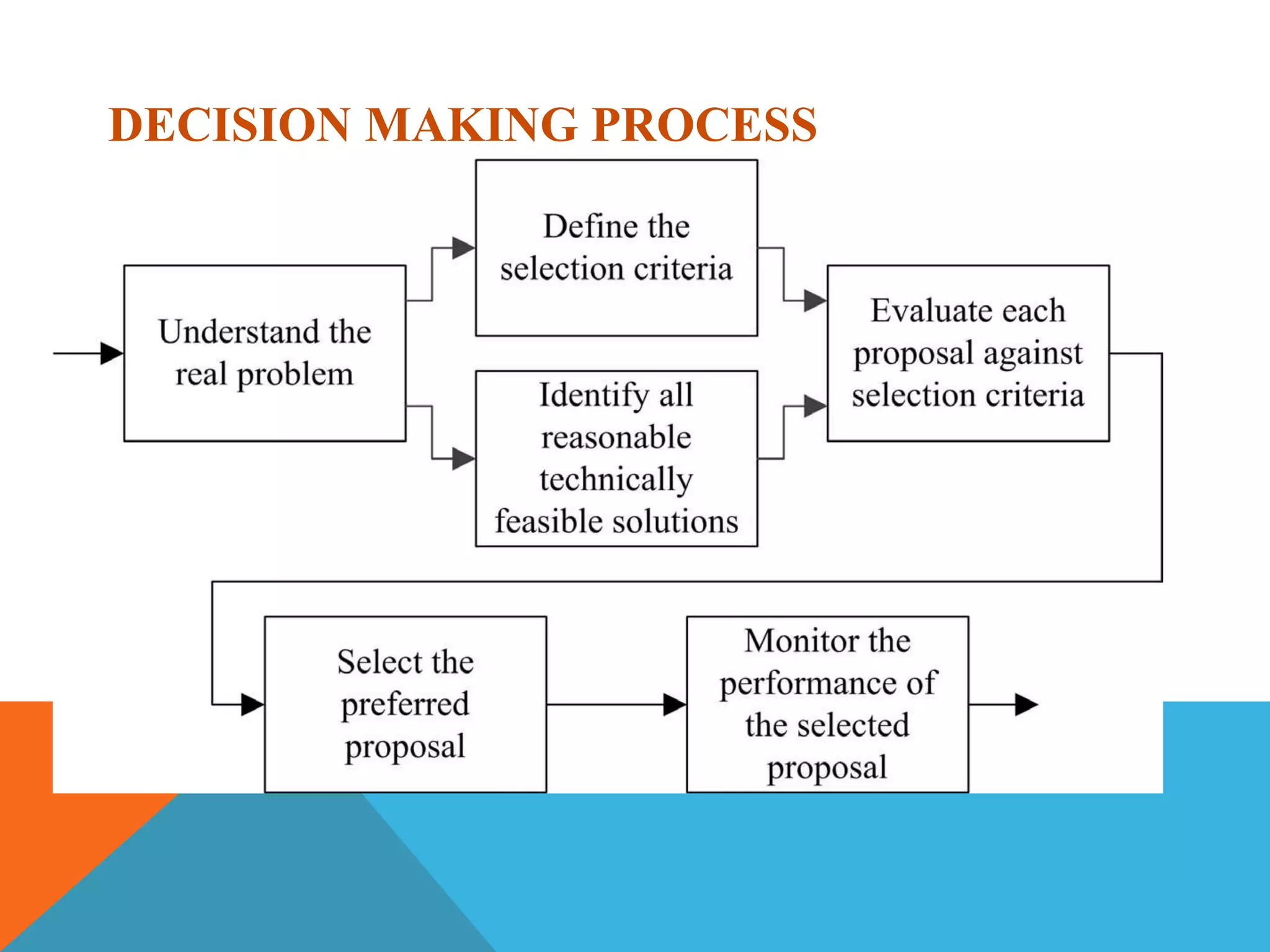The document outlines a 7-step process for effective decision making: 1) identify the decision, 2) gather relevant information from internal and external sources, 3) identify alternative paths of action, 4) weigh the evidence and evaluate alternatives, 5) choose the best alternative based on meeting the identified need, 6) take action to implement the choice, and 7) review the decision and consequences to determine if another decision process is needed.
